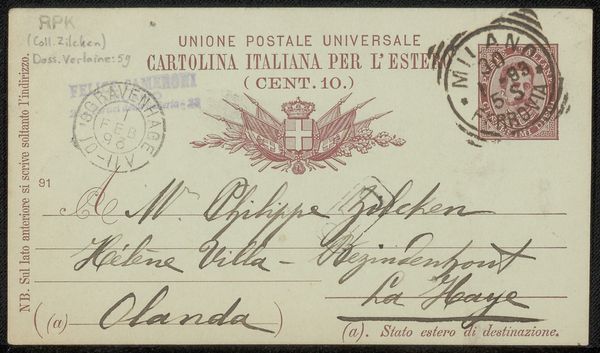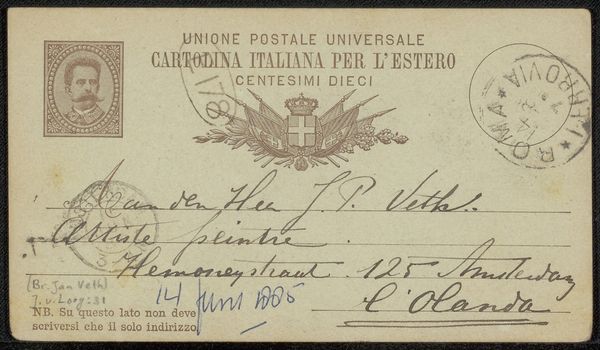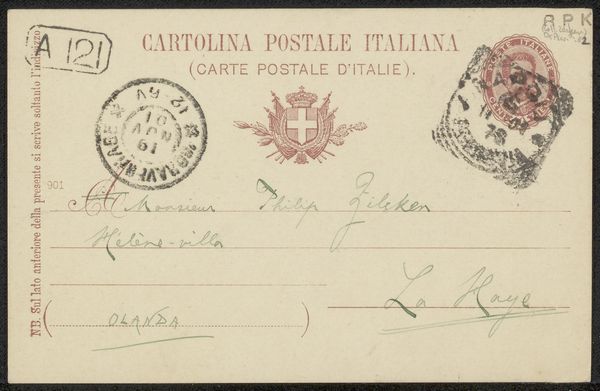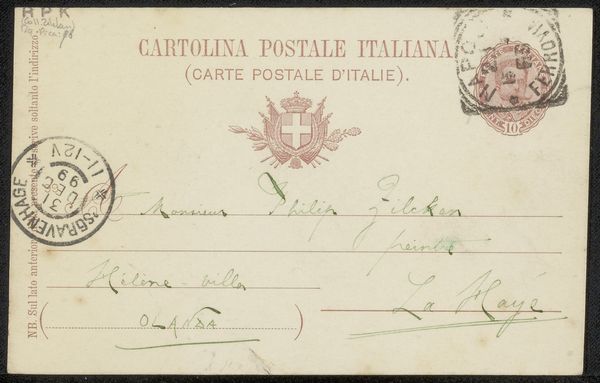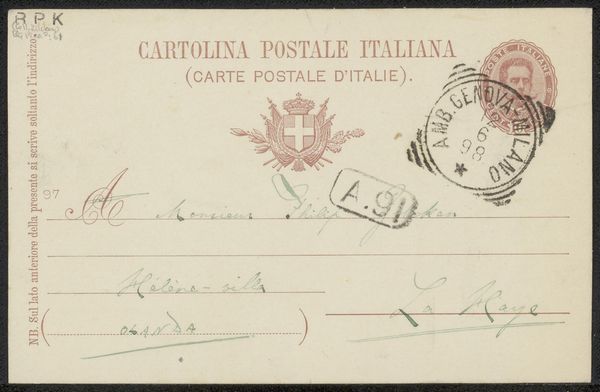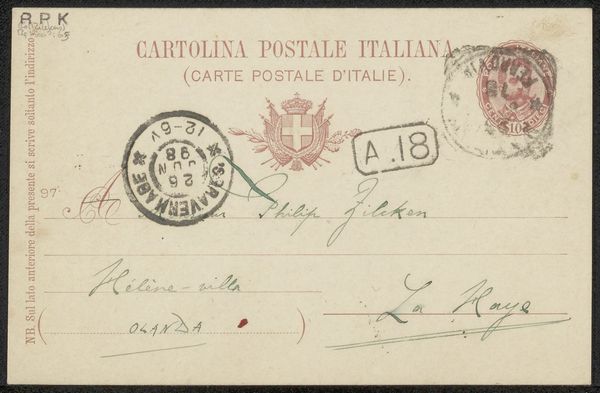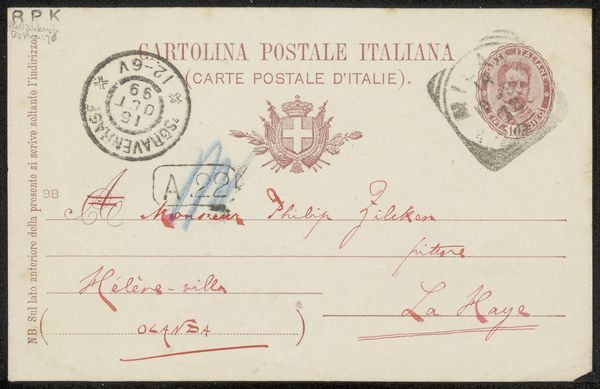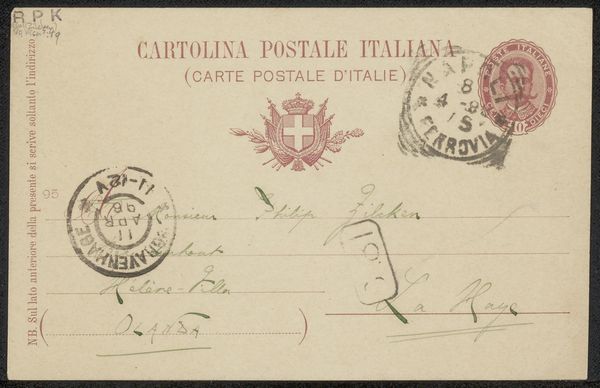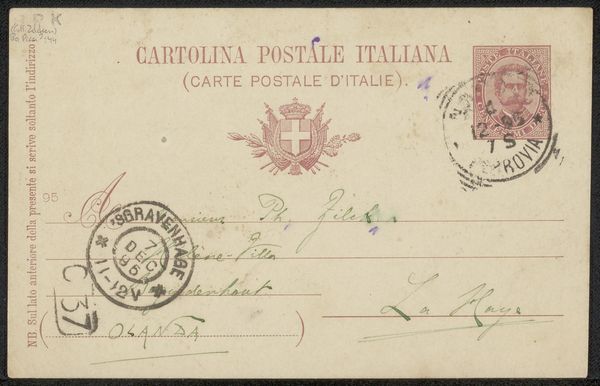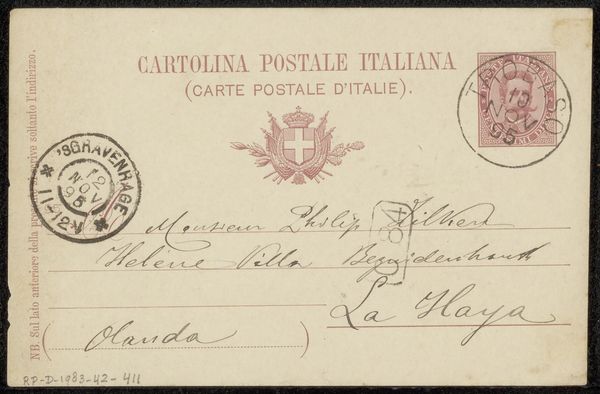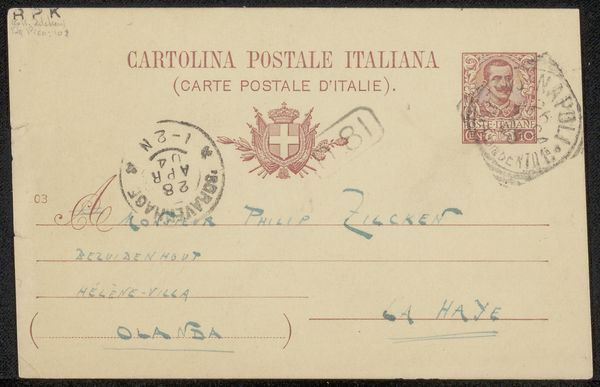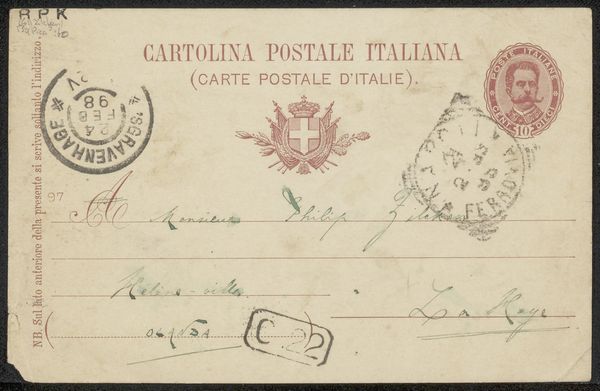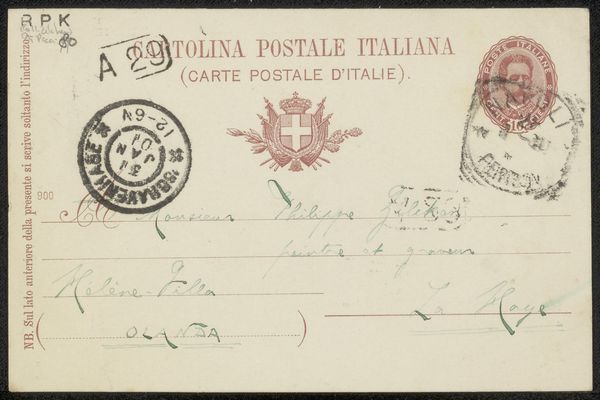
collage, paper, ink, pen
#
collage
#
pen drawing
#
pen illustration
#
pen sketch
#
paper
#
ink
#
pen
Copyright: Rijks Museum: Open Domain
Curator: Before us is "Briefkaart aan Philip Zilcken," a postcard likely dating from 1893 to 1897. Its a collage featuring ink and pen work on paper, an intimate correspondence piece. What springs to mind as you view it? Editor: A faded snapshot of a bygone era. There’s a delicate poignancy to it – the fragile paper, the looping script. I imagine someone holding this in their hands, reading the words penned long ago. A message across time, now a relic in a collection. Curator: Precisely! It speaks volumes about cultural continuity and how seemingly mundane items acquire significance over time. The postcard itself, with its "Cartolina Italiana per l'Estero" header, indicates international communication protocols of the era. The recipient, Monsieur Philip Zilcken, is addressed with a formality that has now faded from commonplace use, a sign of the times. Editor: Absolutely, it’s a window into social and institutional practices. Postcards became popular in the late 19th century as an accessible way to communicate and they shaped public discourse as images and ideas were disseminated in this manner. It is interesting to see the design including the Italian coat of arms as a part of promoting a national identity and how that relates to personal communication. Curator: We should not dismiss the imagery on the stamp as well: there's the postmark itself which carries coded cultural information about place and date; also there appears to be a figure embossed in the stamp itself. Do these visual symbols, combined with the written word, hold any weight as personal symbols or broader archetypes for you? Editor: I am sure these visual symbols of a person and a place gave the message importance as a means of exchange for both the sender and the recipient in a tangible fashion, but their larger symbolic value to culture depends on whether we view the sender and receiver to have significance at the time, which will require more research. Curator: A great perspective that also requires more time, which alas, we are short of right now! Let’s allow that question linger for listeners to engage with as they proceed in the gallery. Editor: Yes, a thought-provoking piece— a reminder that even fleeting missives contribute to the ongoing narrative of cultural history and the shaping of personal memory.
Comments
No comments
Be the first to comment and join the conversation on the ultimate creative platform.
